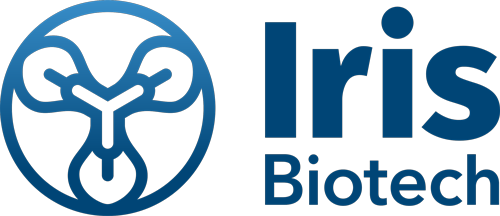Welcome to Iris Biotech
For better service please confirm your country and language we detected.

For better service please confirm your country and language we detected.

Thank you very much for your interest in our products. All prices listed on our website are ex-works, Germany, and may attract customs duties when imported.
You may/will be contacted by the shipping company for additional documentation that may be required by the US Customs for clearance.
We offer you the convenience of buying through a local partner, Peptide Solutions LLC who can import the shipment as well as prepay the customs duties and brokerage on your behalf and provide the convenience of a domestic sale.
Continue to Iris Biotech GmbHSend request to US distributorChemischer Name: 8-(Popargylyloxycarbonyl-amino)-3,6-dioxaoctanoic acid dicyclohexylamine // Synonyme: {2-[2-(Poc-amino)ethoxy]ethoxy}acetic acid, 10-oxo-3,6,11-trioxa-9-azatetradec-13-yn-1-oic acid, 2-[2-(-{[(prop-2-yn-1-yloxy)carbonyl]amino}ethoxy)ethoxy]acetic acid,(propargyloxy)carbonyl-AEEA, Poc -AEEA, Pryoc-AEEA dicyclohexylamine salt
Ab 108,00 €
PEGylating spacer molecule suitable for standard Click conjugation. In combination with tetrazine linkers it can also be used in copper-free Click conjugations (Diels-Alderreactions).
Propargyloxycarbonyl, commonly abbreviated as Poc or Pryoc, can either be used as alkyne component for standard Click conjugation or in combination withtetrazine linkers in copper-free Diels-Alder type Click reactions. It also has applications as unusual protecting group for amines, hydroxy functions and as esters. All 3 are stable to neat TFA, but can be cleaved at ambient temperature with Co2(CO)8 in TFA:DCM. Deprotection with other transition metals like palladium have also been reported.
N-alkynyl derivatives of 5-fluorouracil: susceptibility to palladium-mediated dealkylation and toxigenicity in cancer cell culture; Jason T. Weiss, Craig Fraser, Belén Rubio-Ruiz, Samuel H. Myers, Richard Crispin, John C. Dawson, Valerie G. Brunton, E. Elizabeth Patton, Neil O. Carragher and Asier Unciti-Broceta; Frontiers in Chemistry 2014; 2(56): 1-9. doi: 10.3389/fchem.2014.00056.
Bioorthogonal Catalysis: A General Method To Evaluate Metal-Catalyzed Reactions in Real Time in Living Systems Using a Cellular Luciferase Reporter System; Hsiao-Tieh Hsu, Brian M. Trantow, Robert M. Waymouth, and Paul A. Wender; Bioconjugate Chem. 2015; DOI: 10.1021/acs.bioconjchem.5b00469.
Palladium-triggered deprotection chemistry for protein activation in living cells; Jie Li, Juntao Yu, Jingyi Zhao, Jie Wang, Siqi Zheng, Shixian Lin, Long Chen, Maiyun Yang, Shang Jia, Xiaoyu Zhang & Peng R. Chen; Nature Chemistry 2014; 6: 352-361. doi:10.1038/nchem.1887.
Propargyloxycarbonyl and propargyl groups for novel protection of amino, hydroxy, and carboxy functions; Yoshiyuki Fukase, Koichi Fukase, Shoichi Kusumoto; Tetrahedron Letters 1999; 40(6): 1169-1170. doi:10.1016/S0040-4039(98)02555-6.
Bitte senden Sie mir mehr Informationen über







